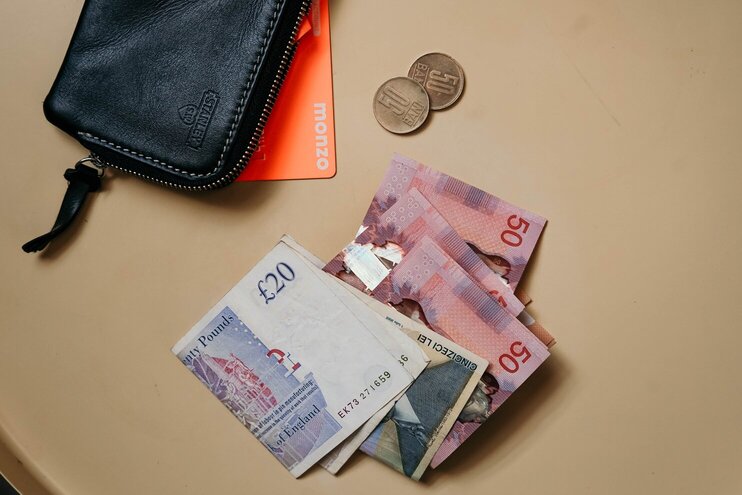Currencies like the US dollar, Pound Sterling, Yen, and Euro among others are known as global legal tender because they are accepted for trade around the world. They are accepted for international transactions, making them make the list of most popular currencies in the World.
Some currencies are highly sought after because of the strength they carry in buying and selling in the global market. They play a dominant role in the foreign exchange market. They are referred to as global or reserve currencies.
They constitute most of the foreign exchanges in the world. As such, foreign exchange (forex) which is the largest and most liquid market, has trillions of dollars, euros, and pounds, traded between millions of traders around the world each day.
To understand which of the currencies dominate the market, below is a list of 10 currencies that are mostly traded in the international market.
US Dollar (USD)
In the foreign exchange market, the dollar rules. US dollar is the most traded currency in World. BIS data in its 2019 Triennial Survey revealed that the USD accounted for 88 per cent of global trade. And in forex trading, around 90 per cent is done in U.S dollars.
According to the International Standards Organization List, the dollar is one of the world’s 185 currencies, most of these currencies are only used locally. They do not have the monetary weight to compete with the USD
No wonder most of the African countries that export and sell their resources to Western counties receive payment in USD.
Some critics say the dollarisation of the African economy is imminent if nothing is done about the trend.
That said, the US Currency Education Programme stated that there was $2,040.7 billion in circulation, totalling 50.3 billion notes in volume as of December 31, 2020, and the number continues to grow
A check on the official website of the Federal Reserves System (U.S. Central Bank) shows that the volume of US dollars continues to grow every year because of foreign demand and use.
For instance, the volume of USD in circulation was $27.9billion in 2008, 10 years after (2018), the figure had risen to $50.3 billion notes in volume
One feature of the U.S. dollar is that it is used as the standard currency for most commodities, such as crude oil and precious metals.
FYI, USD isn’t the strongest currency in the world, one advantage the USD has over other currencies is the strength of the U.S. economy dominated by products and services that appeal to the international market. That contributes to the status of the USD as the most important currency in global trade.
It’s estimated that half of $2.04 trillion in circulation at the end of 2020 is circulation abroad, especially in Latin American countries. They are often used as hard currency in day-to-day transactions.
The plan by Russia’s government to accept Rubles as its means of exchange for sales of its gas and oil in replacement for the USD may degrade the power of the USD in that region.
Euro (EUR)
The second most important currency in global transactions is the Euro (EUR) which is the official currency of the Eurozone.
BIS report states that 32.3 per cent of global trade is carried out in Euro. Aside from that, the EUR also makes up 20 per cent of known central bank foreign currency reserves.
International trade analysts once said had the chance of overtaking the USD as No. 1 as the most important currency, but the eurozone crisis didn’t help it achieve that status.
Despite that eurozone crisis, 2019 data revealed that the EUR has one of the world’s highest combined values of banknotes and coins in circulation with more than €1.3 trillion in circulation.
Japanese Yen (JPY)
If it’s by sentiment and popularity, one might not have thought that the Japanese Yen (JPY) could be among the top five most popular currencies in the world and global transactions.
JPY isn’t just No. 3, it also ranks better than the GBP, CAD and AUD. It is the third most used currency in the foreign exchange market, after the United States dollar (US$) and the euro.
It’s pertinent to also note that JPY is mostly popular for cross-border transactions among the Asian countries and also widely used as a third reserve currency after the US dollar and the euro.
By the way, JPY as of December 2021, there were 122.0 trillion yen banknotes in circulation.
The Japanese yen isn’t the strongest currency in Asia. The strongest on that continent and globally is the Kuwaiti dinar.
But in terms of exports, Kuwait can’t compete with Japan. The power of Japan lies in its manufacturing-oriented economy.
For the record, the Japanese Yen accounts for 16.8% of global transactions, making the JPY the third most traded currency after the USD, EUR
Pounds Sterling (GBP)

Apart from being the fourth most popular currency in the world, Great Britain Pound popularly pounds sterling is also the world’s oldest currency that is still in use since it was introduced as a means of exchange in 1489 when the first pound in coin was introduced.
GBP accounts for 12.8 per cent of global transactions.
It is the official currency of the United Kingdom, Jersey, Guernsey, the Isle of Man, South Georgia and the South Sandwich Islands, Gibraltar and the British Antarctic Territory among others.
There were 85.9 billion pounds of notes and coins in circulation in the United Kingdom as of June 2020
The pound is among the world’s strongest currencies and comes behind JPY, Euro, and the USD in terms of most traded currencies.
Australian Dollar (AUD)
The Australian dollar (AUD) isn’t only used within Australia, but it’s also the means of transactions in its external territories, including Christmas Island, Norfolk Island, and Cocos (Keeling) Islands. It is also used in three independent Pacific Island states Nauru, Tuvalu, and Kiribati.
In 2016, the Australian dollar accounted for 6.9% of foreign exchange, becoming the fifth most traded world currency.
In 2019 it accounted for 6.8% of global trade, still remains the fifth most used legal tender, thanks to exports potential in iron ore. In fact, Australia is the largest exporter of iron ore and coal in the world, meaning the value of AUD depends heavily on commodity prices.
In the same year (2019), there were 71.12 billion AUD in circulation, including cash reserves held by the banking system and cash in circulation in other countries.
Canadian Dollar (CAD)
CAD is the official abbreviation of the currency of Canada. At a time, the Canadian Dollar was accounted occupied the fifth position as the most held reserve currency. It lost that position to the Australian Dollar in the 2019 research by BIS.
The CAD is the sixth most held currency. Even as it occupies the sixth position, the Canadian dollar is still popular with central banks around the world because of Canada’s relative economic strength in global trade.
Swiss franc (CHF)
The comparative advantage of Switzerland is its strong and stabilized financial system, which, to a great extent, helped the Swiss franc to occupy the same position as the Canadian dollar: as the 6th most traded currency.
CHF is also the official currency of Liechtenstein. The CHF accounts for 5% of the global transactions by currency. And it is also held as foreign reserves by some central banks around the world.
That said, the stability of the Swiss franc make some dictators in Africa keep their loots in Swiss banks, one of them is late Nigeria’s despot Gen. Sani Abacha.
Renminbi (CNY)
With 4.3% of global transactions executed in Renminbi, the CNY which is the official currency of the People’s Republic of China is the eighth most popular currency.
Hong Kong Dollar (HKD)
The Hong Kong Dollar is the official currency of the Hong Kong Special Administrative Region of the People’s Republic of China.
HKD is the 9th most traded currency in the world, accounting for 3.5% of the volume of currencies traded in 2019.
New Zealand Dollar (NZD)
Called the “Kiwi” in currency trading, the NZD is the official legal tender of New Zealand. It is also the official currency of Cook Islands, Niue, Tokelau, and the Pitcairn Islands
By the volume of international transactions, the New Zealand Dollar accounts for 2.1%.
Recap:
By the volume of global transactions, the list of most popular currencies is summarised in the table below from No. 1 to No. 10.
| Currencies | Volume of Trade by Percentage |
| USD | 88.3% |
| EUR | 32.3% |
| JPY | 16.8% |
| GBP | 12.8% |
| AUD | 6.8% |
| CAD | 5% |
| CHF | 5% |
| CNY | 4.3% |
| HKD | 3.5% |
| NZD | 2.1% |
Sources:
- Featured image by pixabay
- Board Of Governors Of The Federal Reserve System. “Currency in Circulation: Volume”. federalreserve.gov. Retrieved March 22, 2022
- US Currency Education Programme. “U.S. Currency in Circulation”. uscurrency.gov. Retrieved March 25, 2022


